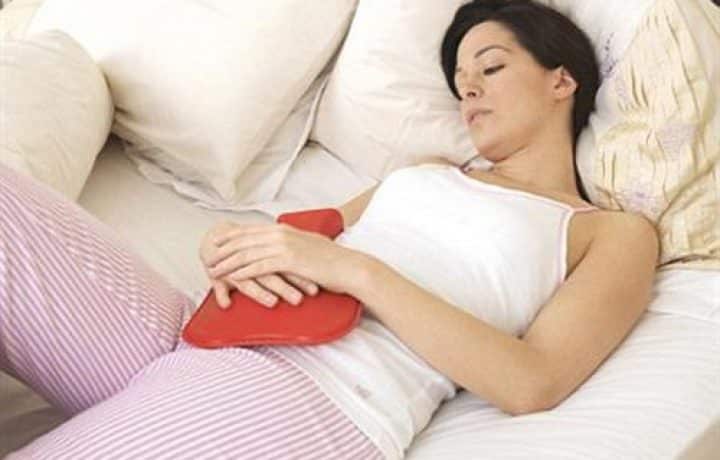Description
* A stroke is the result of a blockage in the brain that halts the supply of nutrients and oxygen to brain cells, thus causing areas of the brain to be damaged or die. * Stroke kills about one third of its victims, another third are left disabled to varying degrees and the other third make a complete recovery. * Common results of disability caused by stroke are paralyzed limbs, usually down one side of the body and speech impairment.

Causes
* Strokes are caused by blockages in the brain due to arteriosclerosis, atherosclerosis (a form of arteriosclerosis), blood clots or hemorrhage.
Symptoms
* Strokes may show symptoms for hours or days before the event and these may include distorted or blurred vision, dizziness, unconsciousness, tingling or numb limbs, incontinence and fits.
Lifestyle symptoms
* Stroke caused by blood clotting and atherosclerosis or arteriosclerosis is best avoided by taking a common sense approach towards life. The following points may help to reduce the risk of stroke:
* Quit Smoking – smoking increases the blood’s tendency to clot and contributes to the risk of arteriosclerosis and atherosclerosis. See smoking for information on how to quit.
* Avoid Passive Cigarette Smoking – secondhand smoke is also linked to disease and death.
* Stress Management – anxiety, stress and anger are other significant risk factors in atherosclerosis and other diseases. Gentle exercise such as yoga and tai chi are known to reduce stress levels, and meditation, acupressure, shiatsu, and massage are known to reduce anxiety levels. It is important to incorporate stress and anxiety relieving programs into your every day lifestyle in order for it to be of benefit in regressing or preventing atherosclerosis.
* Address Obesity Problems – obesity puts unnecessary strain on the body and heart, and causes changes in blood lipoprotein levels that increase the risk of arteriosclerosis and atherosclerosis.
* Dietary changes – are an important aspect in the treatment and prevention of arteriosclerosis and atherosclerosis. – Adopt a vegetarian diet, as vegetarians suffer less incidence of atherosclerosis. – Eat high fiber, low cholesterol foods, as this will reduce the risk of atherosclerosis. – Eat foods high in vitamin E such as green leafy vegetables, whole grains, nuts, sunflower seeds, soybeans, legumes, and peas, this improves circulation, helps to prevent blood clotting and has antioxidant effects. – Avoid foods such as junk food, caffeine products, candy, chocolate, alcohol, salty or fried foods, saturated fats, animal proteins and processed foods including foods containing white flour and sugar.
Natural treatments for stroke:
* Emergency medical treatment is the only available treatment for a stroke, however natural therapies may help recovery from stroke. Treatment such as massage, acupuncture, reflexology, Feldenkrais method and physiotherapy may all help to improve bodily function.
SEE:
VITAMIN B6 – PYRIDOXINE – helps to reduce the risk of arteriosclerosis. Natural sources of vitamin B6 include brewer’s yeast, cabbage, potatoes, alfalfa, soybeans, sunflower seeds, brown rice, peas, carrots, tempeh, corn and bananas. Use according to label instructions. Note that the use of cortisone drugs prevents the absorption of vitamin B6.
VITAMIN E – an important antioxidant and a cofactor in many enzymes. Vitamin E may be of assistance with angina, cancer, blood clotting and cell damage and reduces the risk of atherosclerosis. Sources of vitamin E include wheat germ, sunflower seeds, alfalfa, dandelion, rose hip, whole grains, asparagus, peas, vegetable oils, peanuts, almonds, butter and walnuts. Use according to label instructions. Seek medical advice before using vitamin E if you are taking anticoagulant medication, have diabetes, rheumatic heart disease, thyroid problems or high blood pressure.
BIOFLAVONOIDS & RUTIN – Bioflavonoids are known to work synergistically with vitamin C to preserve the structure of capillaries. Bioflavonoids promote the uptake of vitamin C into the body, lower cholesterol and promote circulation. Sources include citrus pith, blackcurrants, prunes, grapes, cherries, apricots, grape seed extract, green tea and rose hip. Use according to label instructions.
SELENIUM – an important antioxidant that works synergistically with vitamin E. Selenium helps to prevent free radical formation and may help to reduce the risk of atherosclerosis. Dietary sources of selenium include milk, brazil nuts, garlic, parsley, peppermint, lemongrass, brown rice, kelp, garlic, wheat germ and whole grain products, broccoli, celery and cucumbers. Use according to label instructions.
CHAMOMILE MATRICARIA, GERMAN CHAMOMILE, ROMAN CHAMOMILE. – helps with sleeping problems, has a calming effect and helps with digestion and pain. Chamomile is a traditional remedy for stress. Do not used for a prolonged period or if allergic to ragweed.
ST JOHNSWORT, ST JOHN’S WORT – used for depression, anxiety, sleep problems and exhaustion. Use according to label instructions and take for a few weeks for optimal result. High doses may cause photosensitivity. Do not use if pregnant or taking antidepressant drugs.
VALERIAN – a traditional remedy for stress, anxiety and insomnia that has a mild sedative effect and improves circulation. Use according to label instructions. Do not use alcohol while taking valerian.
GARLIC – dilates blood vessel walls, thins the blood reducing the likelihood of blood clots and lowers cholesterol levels. Use according to label instructions. People taking anticoagulant drugs should take garlic under medical supervision.
